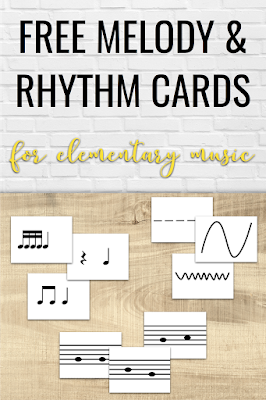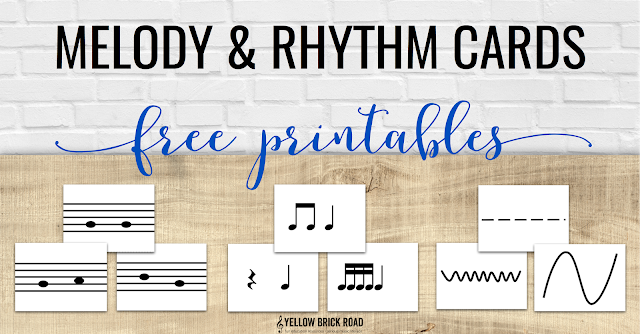Here’s how I envision my idea:
CENTERS
Begin by grouping instruments into centers. If you want to focus on mallet instruments, group them by wood, metal, or voicing. If you want to use solely rhythm instruments, you could group them by skins, shakers, and etc. Save yourself some time and ask each class to prep for the next when possible. For example, if your 1st graders will be working with so, mi, and la on the Orff instruments, ask your 3rd graders in the class before to set the bars for them.
MELODY & RHYTHM CARDS
There will be a stack of cards in front of each instrument. Each card will contain two beats of melody or rhythm. Students will begin in the center by playing each card individually. If they have trouble playing anything, they should ask someone in their group for help or raise their hand and wait for you. Then, they can begin arranging the cards to create their own rhythm and/or melodic patterns. They can arrange the cards as many times as they’d like until it’s time for the next rotation.
You can download and print the free melody and rhythm cards below. Some cards contain a blank box for you to write in your own melody or rhythm. You might label the melody cards with Solfege if you prefer. You can color code the cards by grade level by marking the backs with a colored marker. That way, you can hand the same stack of cards to each student throughout the day, and they will be able to separate the ones they need based on color.
EXPLORATION CARDS
The exploration cards included in the download can be used by younger students as a way to explore their instruments. They can also double as vocal exploration cards. Older students might use them to explore unknown pitches or articulations.
DIFFERENTIATION
The great thing about having all of the cards together, is that your students can choose the skill level they prefer by picking their own cards from the stack they’re given. It’s also an easy way to see the pitches and rhythms they’re most comfortable using.
 |
| Pin Now. Share Later. |
I hope you feel inspired to try these ideas in your own classroom. If you do, I’d love to hear all about it! Be sure to share your experiences in the comments section below.


10 Responses
Lots of fun possibilities with these cards. Thank you!
Thanks Jennifer!
Fun idea!! Thanks!
You're very welcome 🙂
Great idea! Thanks!
Aimee @ https://ofortunaorff.blogspot.com
Thanks Aimee 🙂
LOVE THIS! I do something similar with instrument exploration, and I think there is a lot of value to giving students a chance to explore different instruments. Often there are instruments that we fully intend for students to learn that we just don't get around to for one reason or another without realizing, or certain students don't have a turn on a particular instrument because you don't have enough for everyone. But these rhythm and melody cards take this whole thing up a notch!! I can't wait to add these to my lessons- THANK YOU for sharing! 🙂 #fermatafridays
Agreed! Kids definitely deserve that time to explore, and I love watching the discoveries they make on their own 🙂
I love this idea! Thanks for sharing! #fermataFriday
Thanks Linda 🙂